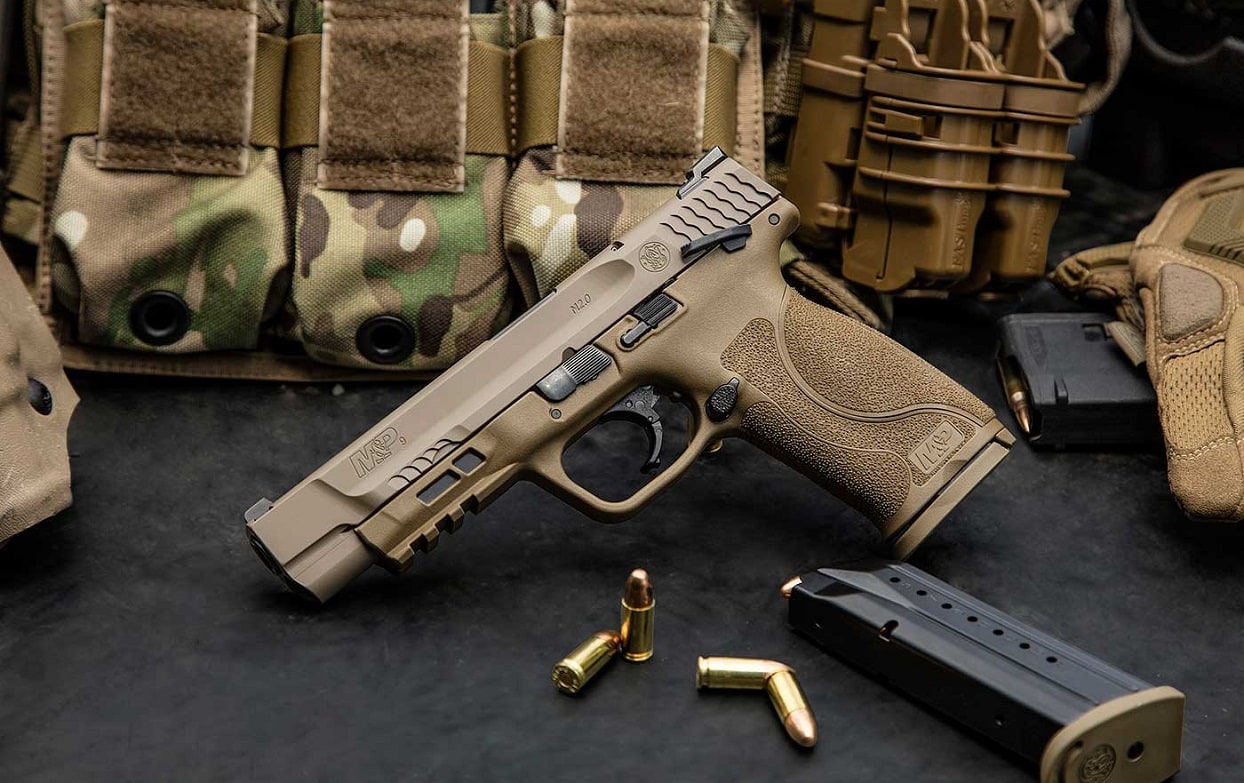The Smith & Wesson M&P M2.0 Lost US Army Gun Competition and It’s Not Clear Why: One morning in 2017, Smith & Wesson stock price got clobbered – dropping by as much as 8 percent. The reason: it lost its bid to replace the M9 Beretta for the U.S. Army’s Modular Handgun System contract. Smith & Wesson entered its M&P M2.0 pistol for the competition and it promptly lost.
But why? Smith & Wesson were seen as a natural choice. It had the household name, proven performance with law enforcement, and a big corporate partner. Smith and Wesson was the first entrant notified that it wasn’t the Army’s choice. So what exactly happened? Here is our effort to make sense of it all:
Smith & Wesson M&P M2.0: Get A Better Dance Partner?
In trying to land the big contract with the US Army, Smith partnered with General Dynamics to help the gun company navigate the federal contracting system. General Dynamics also helped design the M&P9 M2.0 barrels. This seemed like a prudent move. If you are fairly new to government contracting find a bigger friend that can guide the way. So that part made sense.
The Gun Has Quite the Upside
The new Smith & Wesson M&P M2.0 pistol itself was a beauty. For the Army, it offered calibers in 9mm or .40 Smith and Wesson. It has ambidextrous manual thumb safeties and other controls for righties or lefties. The polymer-framed, striker-fired design, M&P9 M2.0 had another item that was important for the military – the ability to resist an accidental discharge. The M2.0 allows the stainless-steel slide to be racked for charging or clearing with the safety engaged. With so many military personnel handling the pistol, it would need these types of unique safety features.
Reviews Are Positive
The stainless-steel barrel is 4-inches with an overall length of 7.25 inches. It weighs 25.8 ounces and 35.8 ounces when loaded, which is on the light side compared to the other competitors. Red-dot optics are easy to install with a molded-in Picatinny railing.
Some reviewers said it has a nice trigger pull, good factory sights, and a comfortable trigger. The reset from the trigger pull is positive. The longer steel chassis seems to help with muzzle rise. It has an excellent grip with plenty of texture for those with sweaty palms.
So What’s Not to Like?
Smith & Wesson never gave a reason for getting dismissed by the Army during the Modular Handgun System competition. But maybe that’s the clue. Modular. Tactical Weapons Magazine, in a 2017 review, admitted that the M&P9 M2.0 was not truly modular. That probably was enough to get the pistol rejected out of hand.
It’s All in the Details
You would think that with a partner like General Dynamics, the contracting team would have scanned every part of the request for proposals and made sure the entrant was compliant with all requirements and specifications, but that’s not what happened.
Sometimes a competition works out well for the civilian market. Reviews are generally good for the M2.0. Smith & Wesson has a great brand, and you can buy the M&P9 M2.0 for around $600. Maybe civilian sales will help that S&W share price. The good news for Smith & Wesson is, that at least over the long run, their profits have continued to move in the right direction, not taking a long-term hit for this contract loss.
Now serving as 1945’s Defense and National Security Editor, Brent M. Eastwood, PhD, is the author of Humans, Machines, and Data: Future Trends in Warfare. He is an Emerging Threats expert and former U.S. Army Infantry office.

